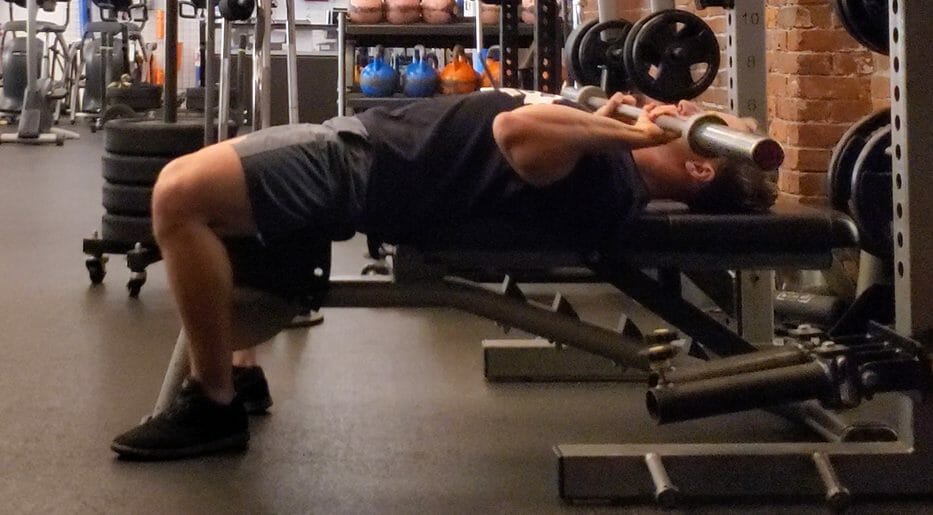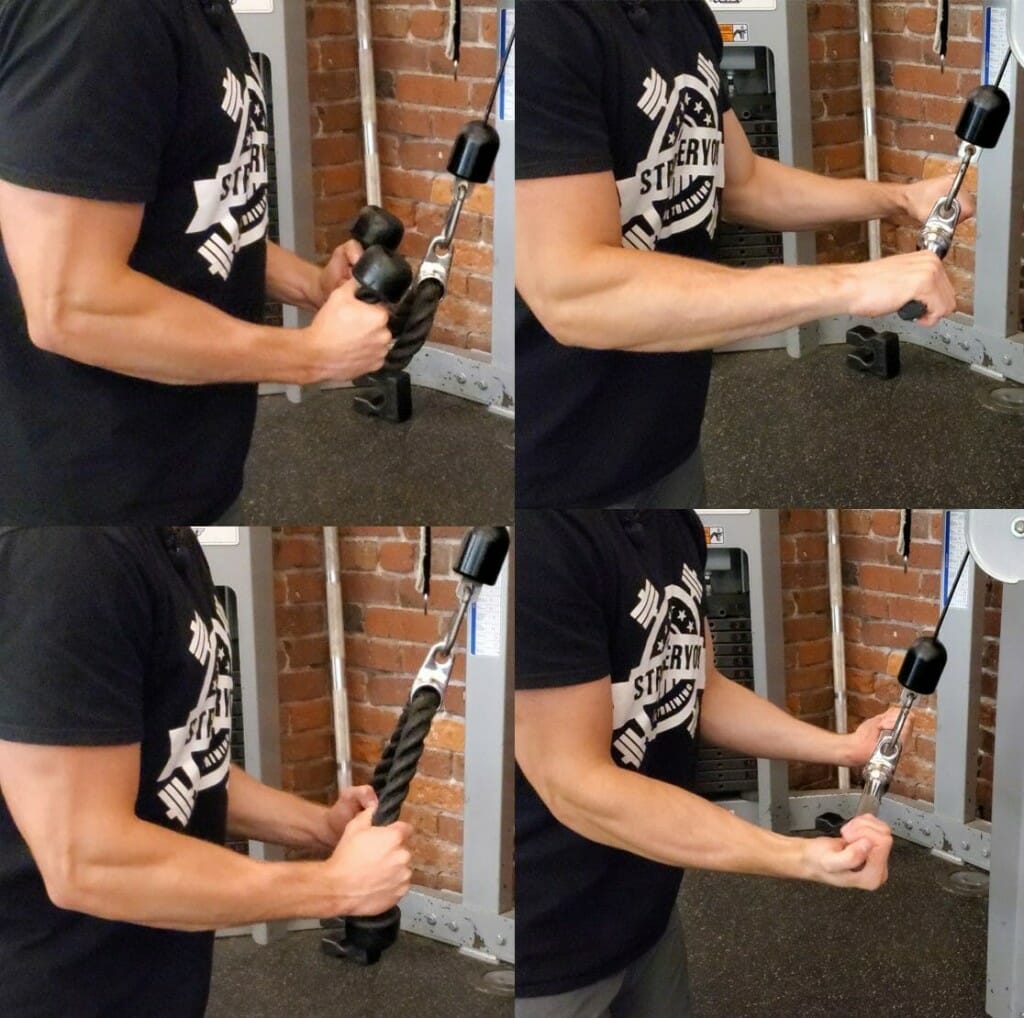This is the 3rd instalment in the Maximum Effectiveness Series. Click on the links below to view the other instalments:
Single Leg Training
DB Rows
Taking your bench to the next level is a multi-faceted process. It requires proper programming, good technique, and the ability to identify weak points in order to build them up. One of the most common weak points I see in the bench press among lifters who already pause on the chest and have spent a good amount of time developing their pecs is in the triceps. This is most apparent in lifters who miss several inches above the chest, around where the elbows begin to extend past 90 degrees and will seem as if the lifter simply has no strength left, even though slightly lower weights will look like they have a lot left in the tank.
Today’s content is aimed at helping you to better select your tricep training strategies by addressing concepts around an appropriate range of motion, keeping your elbows healthy, and finding ways to load as heavy as possible.

1) Range of Motion (ROM)
As a general rule with hypertrophy based training, you want to train the muscle through a full range of motion in order to maximize benefit (muscle growth) while minimizing the risk of injury. With strength training, you want to use a range of motion specific to the task you are trying to improve – quarter squats never made anybody’s ass-to-grass squat stronger.
When it comes to picking a proper ROM on tricep exercises, consider the nature of the exercise and the intent behind it. A board press by nature is a reduced range of motion exercise but offers the benefit of being more specific to the bench press (more on this later), while a cable pushdown allows you to use the full range of motion of the elbow, but at the expense of being less specific to the bench press. Generally speaking, on single-joint tricep movements, you want to use the biggest range of motion possible, while on compound movements, the range will differ based on the application.
2) The Right Variation For Your Elbows
Within most tricep movements, there is room for changes to tempo, grip position and orientation, and load distribution across joints.
One of the great things about having so many options is that you can select a variation that doesn’t hurt your elbows. It’s very common to have some discomfort near the tricep tendon area on the back of the elbow with certain movements. If you can get the same result from a cable pushdown and a barbell skull crusher, but the pushdowns hurt, why would you bother irritating your elbows and potentially interfering with your training due to a very avoidable injury if you can swap for a cable variant?
Additionally, altering your hand position between overhand, underhand, or neutral grip can often alleviate any tension issues you are having at the elbows by rotating the radius and ulna (forearm). On top of that, you can even add slower tempos to the eccentric (lowering) component of your lift to help BUILD connective tissue strength. This is an invaluable strategy if you find most tricep exercises give you issues; load light and go slow to start.

3) Heavy Loading Matters
The last point I want to highlight today is that while there are so many options on what to choose for tricep exercises, the principle of specificity still matters. If you are training for bench performance, compound movements that use the shoulders (JM Press, Dips, Close-Grip Bench) along with the triceps will have much better carryover than single-joint tricep exercises (Pushdowns, Skullcrushers, Kickbacks, etc).
On the programming front, specificity still applies. If you are training for strength, sets of 3-6 on your compound tricep movements will be your best bet, and adding some additional volume (if needed) with your single-joint movements for sets of 8-12 to finish things off.
Training proper ROM, individualized variations, and exercise selections all matter if you are looking to optimize your training and not just use a cookie-cutter template for average results. If all of these compound tricep movements hurt and you can only do light cable pushdowns with a tempo, you probably can’t bench pain-free either and it’s time to go hire a professional (coach, physio, massage) and fix yourself up.
PS – Here’s 3 ways I can help you get stronger:
3. Apply to join my “Momentum Program” and become a case study. We’ll work with you 1-on-1 (in-person or online, depending on location) to consistently increase your PRs.
It takes less than 60 seconds to apply HERE in order to find out more information and see if you’d be a good fit.